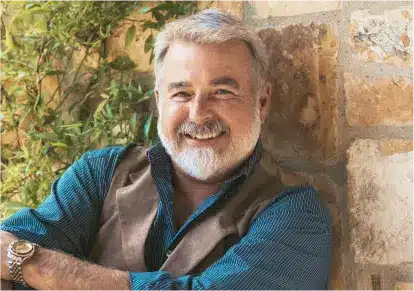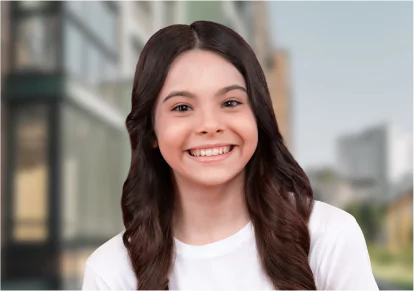Learn About Hair Loss
Alopecia and Other Causes of Hair Loss
What Causes Hair Loss
Millions of people deal with hair loss every day. You are not alone. The good news is understanding the causes of hair loss, from alopecia to harsh styling practices, is the first step toward effective treatment. We have the answers to help you make informed decisions about your hair health.
Get to Know the Hair Growth Cycle
Everyone sheds hair daily. That’s perfectly natural. Our hair growth cycle occurs in four ongoing phases: growing, transitioning, resting, and shedding. Noticeable hair loss occurs when that cycle is disrupted by a cause or a condition that can lead to overall thinning, patchiness, or a receding hairline.
Why is My Hair Falling Out?
Men, women, and children all lose hair in different ways and for different reasons. Dive deeper into gender and age-related causes and what you can do about them.
Common Causes of Hair Loss
While a majority of hair loss is caused by genetics, many other factors could be at play. Here are a few common culprits that cause hair loss or can make it worse.
Diet
What you eat is important. A deficiency in specific vitamins and/or minerals could contribute to hair loss. Some key nutrients for your hair include B vitamins (particularly Biotin), vitamin D, iron, zinc, protein, and essential fatty acids.
Hormonal Changes
Fluctuating hormone levels in women may cause or contribute to hair thinning or loss. These changes can often occur postpartum or be attributed to perimenopause, menopause, polycystic ovary syndrome.
Medications
Causes of hair loss can often be traced back to prescription drugs or medical treatments, though determining the exact one can be hard to identify. Consult with your doctor if you think your medications might be to blame.
Stress
While everyday stress doesn’t usually impact your hair, Telogen Effluvium, Trichotillomania, and Alopecia Areata are three types of hair loss associated with high stress levels. Managing stress can help hair come back.
Styling Practices
Frequent use of harsh styling practices can cause breakage and make hair fall out. Some of the most damaging include wearing tight hairstyles for extended periods, chemical treatments, and incorrect use of hot styling tools.
Genetics
Men and women’s hair loss can both be strongly influenced by genetics. Known as androgenetic alopecia, it can be inherited from either parent. Understanding your family history can help you take the necessary action early.
Illness
Certain illnesses like thyroid disease, autoimmune diseases, or severe infections can disrupt the hair growth cycle. Similarly, treatments like chemotherapy can also result in hair loss. See your doctor if you think there is an underlying issue.
The information provided in this page is general in nature and widely available. All content is provided for informational purposes. The exact cause of hair loss can only be determined by a medical professional.
Understand Conditions that Cause Hair Loss
Certain medical conditions may be to blame when it comes to hair loss. We recommend talking to your doctor if you suspect you’re dealing with one or more of the conditions listed here.
Androgenetic alopecia, or hereditary hair loss, is the most common type. This progressive condition affects both men and women born with inherited hair follicles sensitive to a hormone called dihydrotestosterone (DHT). DHT causes hair follicles to miniaturize over time, producing thinner and finer hair.
Eventually, the follicles stop producing normal hairs, leaving only “peach fuzz.” Men with this condition typically notice a hairline that recedes or thinning at the crown. Women with androgenetic alopecia don’t always follow a recognizable pattern but may see a widening part, overall thinning, or patchy hair loss.
Alopecia areata is an autoimmune condition where the immune system mistakenly attacks the hair follicles, causing hair loss on the scalp, face, and other areas of the body. Alopecia areata can occur in multiple family members, suggesting genetics play a part in this condition. It affects both men and women and often first appears in childhood.
Cicatricial alopecia, or scarring alopecia, refers to a group of rare disorders that destroy hair follicles and replace them with scar tissue. Most forms of the condition first appear as small patches of hair loss that may expand over time. Many African American women suffer from this condition. While these disorders affect a small population, they can result in permanent hair loss.
Involutional alopecia is the gradual thinning and hair loss that comes with age. Over time, more hair follicles move into the resting phase, and the remaining hairs become shorter, finer, and fewer. Involutional alopecia is the second most common type of hair loss.
Traction alopecia results from damaged hair follicles due to constant tension or pulling over a long time. Repeatedly wearing tight hairstyles like ponytails, buns, or braids can cause traction alopecia. This condition typically occurs near the temples or along the hairline. African American women often experience this type of hair loss at their edges, the hairline area that goes from ear to ear and frames the face.
Anagen effluvium is the sudden loss of hair during the growing (anagen) phase. This condition may be caused by exposure to chemicals or toxins such as those found in chemotherapy or radiation for cancer treatment. It is generally reversible, and hair typically regrows within 1-3 months, but some hair loss can be permanent.
Telogen effluvium occurs when hair follicles are prematurely pushed into the resting (telogen) phase of hair growth. This condition is usually due to an acute external factor such as physical trauma, surgery, major illness, or other intense stressors on the body. It typically appears as diffuse thinning across all areas of the scalp and, in many cases, is temporary and reversible.
COVID-19 and pandemic-related stress can lead to hair loss, with up to 60% of infected individuals experiencing shedding. The shedding, known as telogen effluvium, typically occurs 1-2 months after infection and resolves within 2-6 months. Other effects of COVID-19, like weight loss, nutritional deficiency, stress, disturbed sleep, and medications, can also contribute to hair loss. Consult a healthcare provider if hair loss is severe or hair doesn’t regrow on its own.
Hypotrichosis is a condition where there is no hair growth from the time of birth. Rather than having hair and losing it over time, people with hypotrichosis never grow any hair. This condition is thought to be caused by a genetic deviation during fetal development.
Scalp folliculitis is usually due to a bacterial infection. It occurs when hair follicles become inflamed due to blockage or damage. Follicles may be surrounded by a ring of inflammation and look like acne. In the early stages, hair may still be present in the follicle, but as the condition progresses, it will fall out. In severe cases, the inflammation can permanently damage hair follicles and result in hair loss.
Trichorrhexis nodosa is characterized by weak points, or nodes, along the hair shaft. The nodes cause hair to break easily, leading to the appearance of thinning hair or patchy hair loss. The condition can be triggered by harsh styling practices such as the overuse of chemicals and heat styling tools. In some cases, trichorrhexis nodosa may be caused by underlying medical disorders such as thyroid problems, an iron deficiency, or a buildup of ammonia in the body.
Trichotillomania is an impulse control disorder that drives individuals to pull out their own hair compulsively. Typically, trichotillomania results in patchy bald spots on the scalp, eyebrows, and/or eyelashes.

Take Our Hair Loss Quiz and See What’s Possible for You
Answer a few questions to get a quick assessment and set yourself up for a discussion with our Hair Loss Specialists.
When did you first notice your hair loss?
Get Our FREE Hair Loss Solution Guide
We can email you our guide with more info on our treatment options.
Learn More About Hair Loss
We all know the benefits that certain foods can have on our health. Carrots can help improve overall eye health….
Eating a well-balanced diet is important to maintaining your overall health. Did you know good nutrition is also essential for…
Millions of Americans try to prevent hair loss every day. While it’s normal to shed 50 to 100 hairs a…







